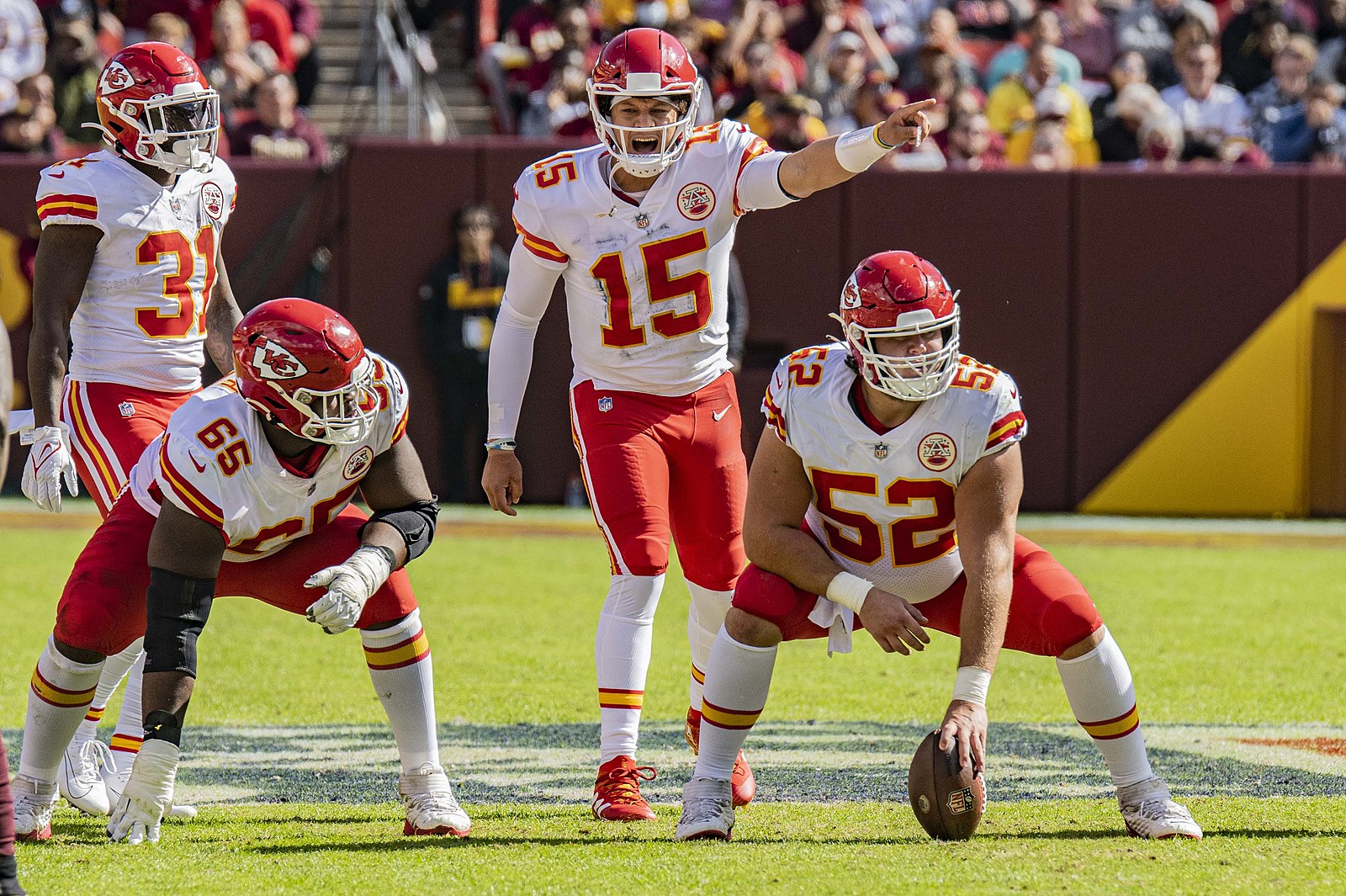In the modern NFL, team success is more dependent on quarterback play than ever before. Each team is seeking to either find their franchise quarterback or secure the franchise quarterback they have for years to come. With this urgency comes a ludicrous contract market that sees quarterbacks receiving deals worth over $50,000,000 in Average Annual Value (AAV) each offseason. Some of the passers receiving these deals are fully deserving of them, while some may be getting overpaid. As I look at the landscape of the league, I can’t help but notice two common paths to success, specifically relating to building a roster around a quarterback. Successful franchises either possess a truly elite quarterback who can carry the team to victory, or they find a quarterback at a discount (either through the draft or free agency) and build a star-studded roster around him.
Let’s take a look at the conference championship teams from last season. As it turns out, the teams that played in the AFC Championship exemplify the “elite quarterback” route to contention and the teams in the NFC represent the “budget quarterback” route. The Chiefs are paying Patrick Mahomes only $45,000,000 per year (I recognize that “only” should not go next to that number) on a 10-year contract signed in 2020. He is the greatest quarterback of his generation and makes Kansas City a perennial contender almost regardless of his supporting cast. Because of his ability, the Chiefs were able to build their receiver room largely with rookie contracts and low-expense veterans without seeing regression significant enough to stop them from winning the Super Bowl. The Chiefs have hit on draft picks and have developed talent well on both sides of the ball, but it’s impossible to argue that they’d be close to the same team with an inferior quarterback.
The Ravens fit into the same argument. Lamar Jackson is undoubtedly an elite quarterback, as evidenced by his two MVP awards in five seasons. Lamar Makes $52,000,000 per year, which currently ranks seventh in the league. His dynamic throwing ability and athleticism put Baltimore in Super Bowl conversations every year, and I’d be surprised if he doesn’t find himself at least in the AFC Championship again soon.
In my opinion, the only elite quarterback in the NFC is Matthew Stafford. The teams at the top of the NFC last season took a different route, paying their quarterbacks less than top dollar and building stronger surrounding rosters. The San Francisco 49ers are perhaps the best example of this roster-building strategy. Brock Purdy makes less than $1,000,000 per year, allowing San Francisco to fully maximize the rest of their roster.
The Detroit Lions will be one of the most interesting teams to test my theory against in the coming years. After a 32-year playoff win drought, Detroit found themselves in the NFC championship (and nearly the Super Bowl) last season. Quarterback Jared Goff was making $33,500,000 AAV at the time. Detroit capitalized on quality drafting to supplement their franchise QB. Over the offseason, Goff signed a contract extension with an AAV of $53,000,000 which makes him the fifth highest-paid quarterback in the league. While I can clearly see why Goff was given this contract, it’s hard to argue that he’s truly a top-5 quarterback in the NFL. His new contract is fairly backloaded, so it won’t affect the Lion’s cap flexibility in the short term, but this team could have a lower ceiling once Goff’s contract reaches its peak.
Consider this article a word of caution to teams with good but not great quarterbacks. Paying non-elite signal-callers top dollar severely restricts the roster flexibility that a team may have and puts that team in a sort of football purgatory. Quarterbacks that I would not consider elite have recently been paid elite-level money, and I expect these new contracts to hinder team success going forward. Perhaps the best example of this is Tua Tagovailoa’s new contract with the Dolphins. Tua now makes $53,100,000 AAV, which ranks fourth in the league. At this point in his career, he has proven himself to be a capable starter, but not an elite quarterback. His new contract will keep the Dolphins from filling significant holes in their roster going forward.
The same can be said about Dallas Cowboys quarterback Dak Prescott. Prescott has played at a near-MVP level as recently as 2023 but has failed to solidify himself as an elite quarterback. The Cowboys have not yet inked a new deal with Prescott, but if they do it will likely fall around $55,000,000 AAV. The alternative is to let Prescott walk in free agency and build the roster around a less expensive quarterback option. I would urge Dallas and other franchises in similar situations to take a long look at that option.






So much depends on the coach and the system he wants to put in place. Doesn’t cost as much to find a QB to just run the play and get the ball out quickly, especially if you can afford to surround him with more talent.